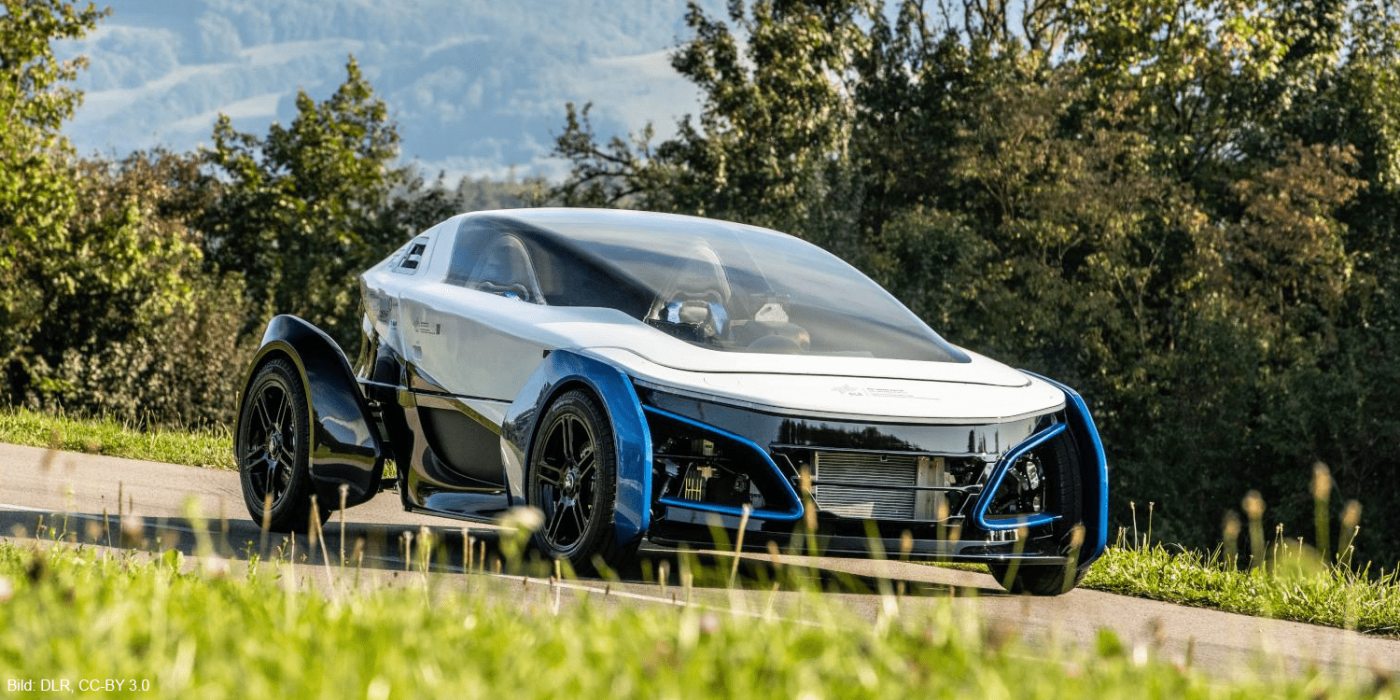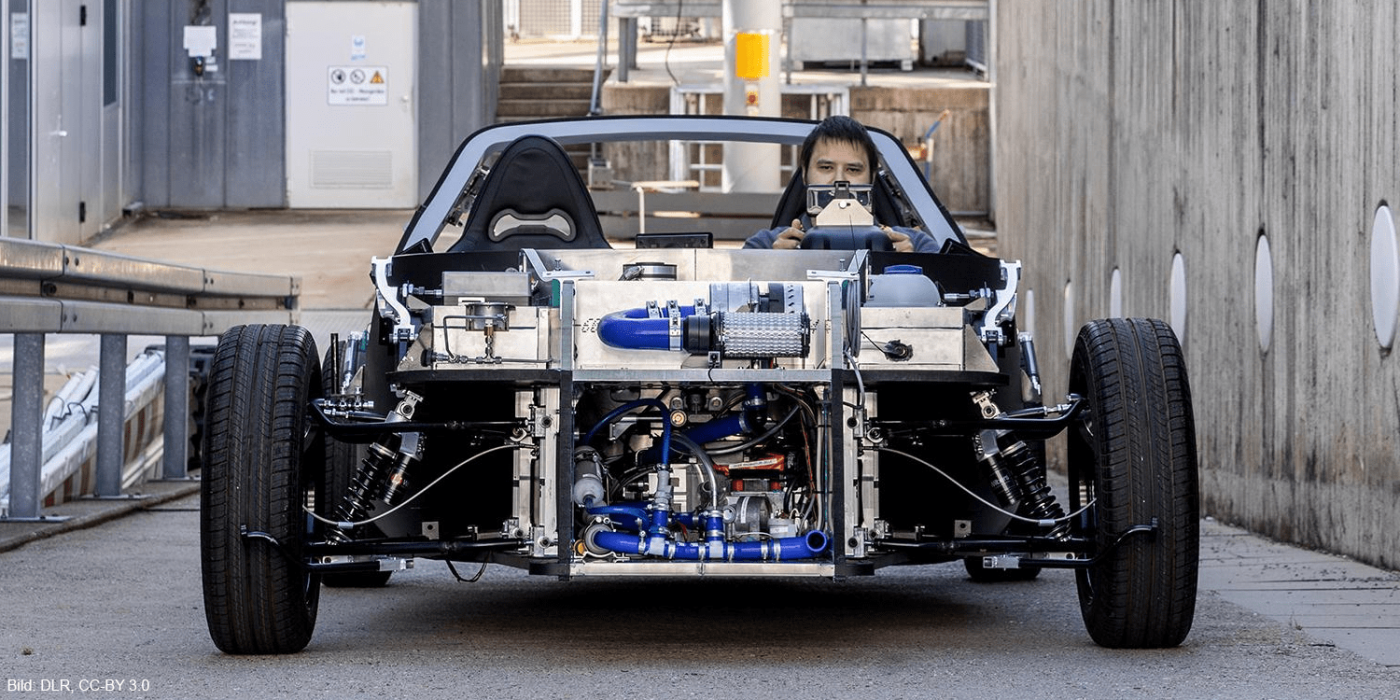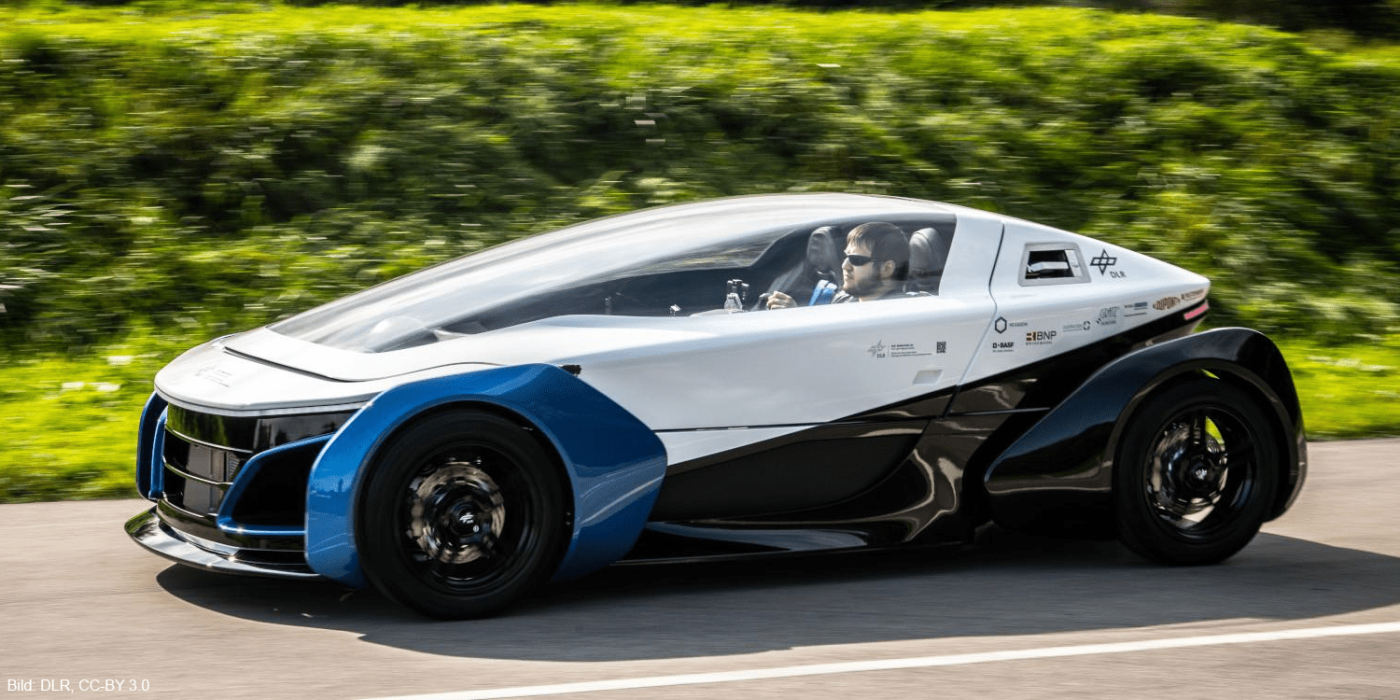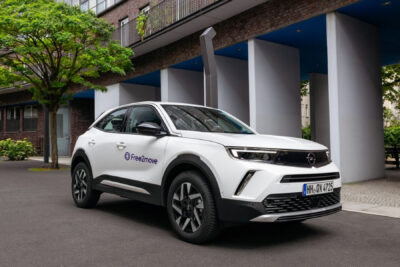German Aerospace Center announces first drive of the SLRV
The German Aerospace Center (DLR) is presenting a small vehicle called the Safe Light Regional Vehicle (SLRV), which combines lightweight construction with a fuel cell drive. As the name suggests, the futuristic two-seater is also intended to be particularly safe.
DLR first presented the concept about two years ago. Since then, the scientists have been working towards a prototype that has now made its first flight. According to DLR, the SLRV, which weighs 450 kilograms, is suitable first and foremost as a commuter car, a feeder in public transport or as a car-sharing vehicle. “As a new mobility solution in the light vehicle class, the SLRV demonstrates that we can combine vehicle technology, usage conditions and cost-effectiveness,” says Professor Tjark Siefkes, Deputy Director of the DLR Institute of Vehicle Concepts. This makes it a tangible building block and a technology platform for locally emission-free, quiet and individual mobility.
So far, so good. Let’s go into detail: The body of the two-seater model, which weighs around 90 kilograms, is 3.8 meters long and kept low to achieve the lowest possible air resistance. “It is both lightweight and safe – a combination that existing vehicles in this light vehicle class (L7e) often struggle to achieve,” says an accompanying press release. This is made possible by a so-called ‘metallic sandwich construction’: “The material used comprises a metal outer layer and a plastic foam inner layer. The front and rear parts of the SLRV are made of such sandwich panels and serve as crumple zones. These sections also house much of the vehicle technology”. The passenger cell, for its part, consists of a tub with an attached ring structure. According to DLR, this absorbs the forces that act on the car during the journey and protects the occupants in the event of a crash.



For the drive train, DLR has connected a small fuel cell with 8.5 kW continuous power to a battery. This provides an additional 25 kW of power for acceleration. According to the development team, this combination weighs less than conventional battery systems, but at the same time ensures a range of around 400 kilometers and a top speed of 120 km/h. The H2 tank is located between the two seats. It holds 39 liters and can store 1.6 kilograms of hydrogen at 700 bar. “The SLRV uses waste heat from the fuel cell to heat its interior,” explains DLR. In addition, the good thermal insulation of the sandwich body in winter has a positive effect on the energy consumption of the vehicle’s air conditioning system.
In view of the purchase costs, the SLRV team currently estimates that it will cost around 15,000 euros. However, since structures made of sandwich materials have not yet been used in the series production of vehicles, DLR is now working on optimizing the associated production technologies. It has succeeded in demonstrating the potential of this construction method, the communication continues. This was the main goal of the project.
The creation of the SLRV is embedded in the large-scale Next Generation Car (NGC) project, in the course of which a total of 20 DLR institutes are jointly developing technologies for road vehicles of the next generation but one. In addition to the SLRV, there are two other vehicle concepts that also take into account the megatrend of urbanization: The Urban Modular Vehicle (UMV) as a modularly designed city car for private and commercial users, and the Inter Urban Vehicle (IUV) designed for longer distances between metropolitan areas.




0 Comments